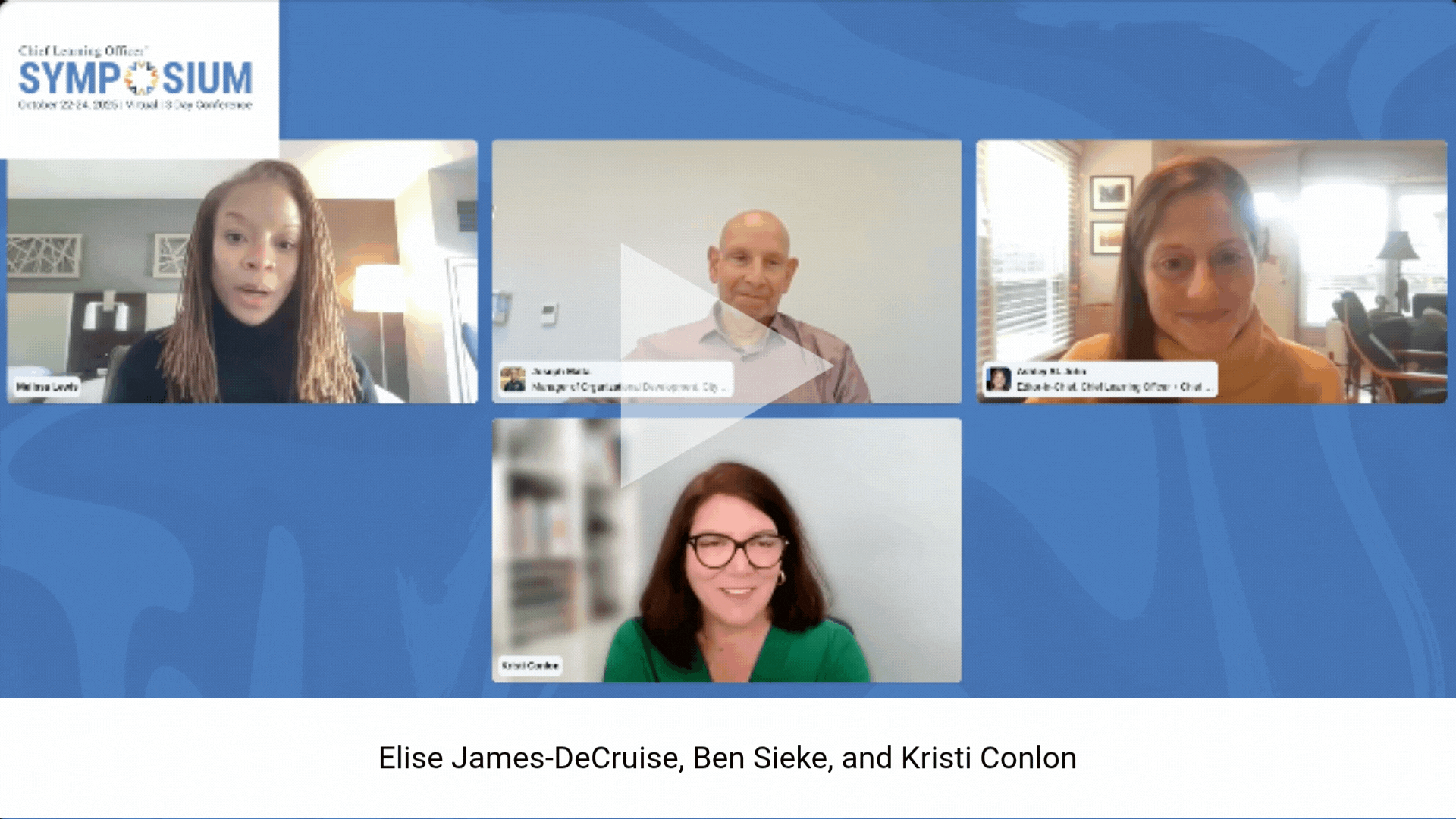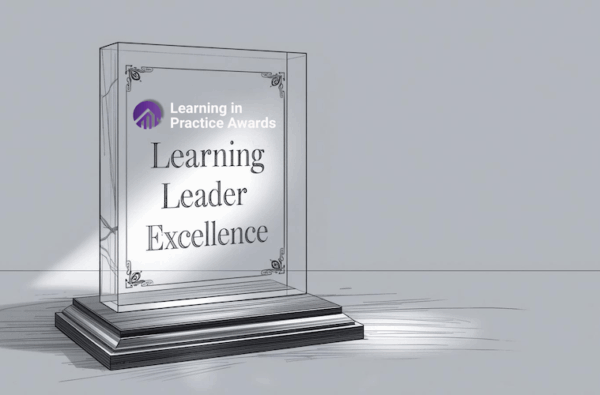From left: Lee Wasson of IBM (accpeted the award for Frank Perisco), Pamela Puryear, Kameli Rajesh and Naureen Meraj
Gold
Frank Persico
Vice President of Learning, IBM
The world is generating 2.5 billion gigabytes of data every day, and 80 percent of it is unstructured — everything from images, video and audio to social media and a blizzard of impulses from embedded sensors and distributed devices.
There’s plenty of buzz about cloud and new cognitive technologies reshaping our computer era. Many struggle to learn how to use the new tech to manage that data; 85 percent of new software is created with cloud infrastructure in mind.
IBM is facing a reshaping technological market and a keen need to reach new buyers who rise from these new opportunities. Learning is a critical aspect for the company as older computing approaches steadily decline. To focus on growth areas, and todevelop learning procedures for technologies that aren’t designed yet, Frank Persico led the company in developing an adaptive mindset with training interventions and support for the act of discovering a solution. For instance, the annual Technical Leadership Exchange changed from a face-to-face, expensive summit to an integration of live events and webcasts so attendees can learn and respond in real time.
IBM also started a THINK40 initiative to encourage its employees to take 40 hours of professional development every year, at their discretion during work hours. The company put greater focus on its hiring process by creating a new certification process for managers to better identify potential hires. Potential candidates also receive a head start on the learning process.
A 2012 study showed that thanks to its New Employee Experience program, 66 percent of employees are less likely to leave IBM in their first year of work.
Silver
Pamela Puryear
Vice President of Organization Development, Chief Talent Officer, Hospira Inc.
In 2011 and 2012, several problems affected business performance at pharmaceutical company Hospira Inc.: trouble consistently delivering products on time and within the budget, compliance issues and lack of repeatable processes to follow.
Pamela Puryear, vice president of organization development and chief talent officer, joined the company in 2011. Her plan was to enact a five-part campaign to transform the work culture from the ground up: integration across programs, grass-roots engagement to embed the culture at every level, and reward and recognition programs. Puryear persuaded her sponsor to use an internal program, and followed up the workshop with reinforcement sessions — a two-day workshop, MakingADifference@Hospira — to cement the knowledge.
The “first-pass quality” grades Hospira’s ability to deliver a product on time and within budget, and it increased by 18 percent from 2012 to 2013. The customer service percentages went up by 22 percent in that time frame and an additional 8 percent in the first five months of 2014.
Bronze (TIE)
Kamali Rajesh
Human Resources Director of Recruitment, Learning & Organization Development,
Ford Motor Co.
As Ford Motor Co. is poised for significant expansions in Asian and African markets, the growing demand produced a problem: lack of talent in fresh markets, particularly in middle- to senior-management levels.
Kamali Rajesh developed Compass, a 24-month initiative, to ensure a sustainable talent supply. The company’s learning and development team partnered with 25 senior business leaders and worked with committees to identify high potential employees for further development, providing them with exposure in the work environment.
Bronze (TIE)
Naureen Meraj
Senior Global Director of Gamification and Strategic Engagement, NTT Data Corp.
NTT DATA Corp. is one of the world’s largest IT companies, and like other companies its size, it can be tough for managers to track employee progress and notice their development potential. Naureen Meraj took the gamification route to create a personalized, collaborative online experience.The voluntary tool, Ignite Leadership, customizes to each users’ leadership style by asking questions, then puts them in progressive levels that award points, produce daily and weekly trivia, and create a goal system. Leaderboards showcase achievements and can share points withother players, all of which is easily tracked by managers.
After the 2013 launch of Ignite Leadership, there was a 50 percent increase in team leadership roles.
















